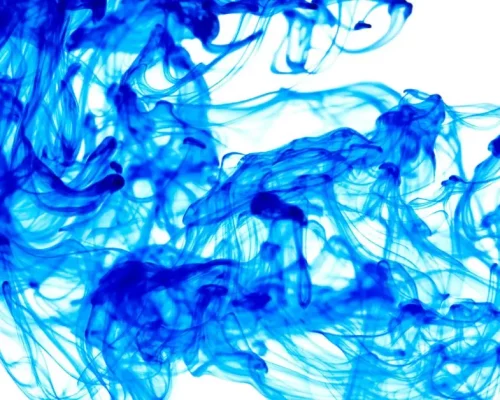In the world of natural health and wellness, we’re always on the lookout for remedies that support the body in deep, meaningful ways. Sometimes, that wisdom is brand new and cutting-edge—and other times, it’s a revival of something surprisingly old. Methylene Blue is one of those “forgotten” remedies making a powerful comeback, and it’s gaining attention in both scientific and holistic circles.
Let’s break it down in plain language: what is methylene blue, what does it do, and how might it support your healing journey?
What Is Methylene Blue, Anyway?
Originally developed in the 1800s as a textile dye, methylene blue (MB) found its way into medicine not long after. It’s one of the first synthetic drugs ever used and has a long history in hospitals—for treating malaria, urinary tract infections, and even certain poisonings.
Fast-forward to today, and methylene blue is being studied and used for its neuroprotective, mitochondrial-boosting, anti-inflammatory, and antimicrobial benefits. In other words, it helps your brain, energy production, immune system, and overall cellular health.
Sounds too good to be true? Let’s unpack it.
1. It Supercharges Mitochondria (Your Body’s Power Plants)
Methylene blue is like a fuel additive for your cells’ engines. It works by improving mitochondrial function—helping your body make more ATP (cellular energy).
Why does this matter?
Because fatigue, brain fog, poor memory, and even chronic illness are often rooted in poor mitochondrial health. Methylene blue supports this process by acting as an electron carrier—basically smoothing out the energy production process when your mitochondria are stressed or not functioning well.
People who use it often report:
- Better energy
- Sharper focus
- Less brain fog
- Improved mood
It’s especially popular in biohacking and longevity circles for this reason.
2. It’s a Powerful Brain Booster
One of methylene blue’s most exciting uses is its ability to protect and repair the brain. It crosses the blood-brain barrier and has been studied for:
- Improving memory and cognition
- Supporting patients with Alzheimer’s and Parkinson’s
- Reducing brain inflammation
- Enhancing neuroplasticity (your brain’s ability to adapt and rewire)
For people recovering from concussions, brain injuries, or even mold-related cognitive issues, methylene blue is emerging as a gentle but effective ally.
3. It Has Antimicrobial & Antiviral Properties
Methylene blue doesn’t just support your energy and brain—it also fights pathogens. It’s been used for over a century to kill bacteria, viruses, parasites, and even fungi.
Some people use it as part of detox protocols for:
- Lyme disease
- Parasites
- Chronic UTIs
- Viral load support
It’s also being explored in combination with light therapy (especially red or UV light), where it acts as a photosensitizer, amplifying the effects of the light on bacteria and viruses.
4. It Improves Oxygenation and Blood Flow
Originally used to treat methemoglobinemia (a condition where blood can’t carry enough oxygen), methylene blue helps the body use oxygen more efficiently.
This has exciting implications for:
- Brain fog
- Chronic fatigue
- Altitude sickness
- Circulatory issues
- Post-viral recovery (like long COVID)
Some users report feeling a noticeable improvement in their breathing and stamina after using small, safe doses.
5. It May Support Mood and Mental Health
Methylene blue has been shown to act as a monoamine oxidase inhibitor (MAOI) at low doses. This means it helps increase levels of mood-boosting neurotransmitters like serotonin and dopamine.
Some studies suggest it could support those dealing with:
- Depression
- Anxiety
- Brain-based mood imbalances
It’s not a substitute for other mental health support, but it could be a valuable tool—especially when used with professional guidance.
So, How Do You Use It Safely?
This is where it’s important to do your homework and work with a knowledgeable provider. Methylene blue is dose-dependent—and when used correctly, it’s very safe. But too much can cause side effects or interact with medications.
Low doses are key. Many of the healing benefits are seen at microdoses, ranging from 0.5 to 4 mg per kilogram of body weight. Most people use 1–10mg per day under guidance.
A few guidelines to know:
- Always use pharmaceutical-grade methylene blue (not industrial or fish-tank cleaner versions!)
- It stains everything—teeth, clothes, countertops. Take it with care.
- Don’t mix it with SSRIs or other antidepressants without a doctor—there’s a rare but serious risk of serotonin syndrome.
- People with G6PD deficiency should not take methylene blue.
Where to Get It
You can find methylene blue through functional medicine suppliers or compounding pharmacies. Look for liquid solutions (often in dropper form) and make sure it’s labeled USP or pharmaceutical grade.
Some brands even make troches (dissolvable lozenges) for easier dosing and better brain delivery.
Real-Life Use Cases
Here are just a few examples of how people are using methylene blue in a wellness context:
- Brain fog from mold exposure or Lyme disease? MB helps with clarity and inflammation.
- Post-viral fatigue? MB may restore energy production.
- Trying to optimize cognitive performance? Some biohackers use it before work, workouts, or public speaking.
- On a detox protocol? MB supports mitochondria and may reduce pathogen load.
It’s not a magic bullet, but many people find that it helps everything else they’re doing work better.
Final Thoughts: Is Methylene Blue Right for You?
If you’re dealing with fatigue, brain fog, neurological issues, or looking to support mitochondrial health, methylene blue is worth exploring. But it’s not something to jump into blindly.
Work with a trusted practitioner. Start slow, use the right form, and pay attention to how your body responds. Healing doesn’t have to be complicated—but it does take wisdom and patience.
Remember: your body was designed to heal. Sometimes it just needs the right support—and methylene blue might be one of those supports that helps tip the scales back toward balance.

